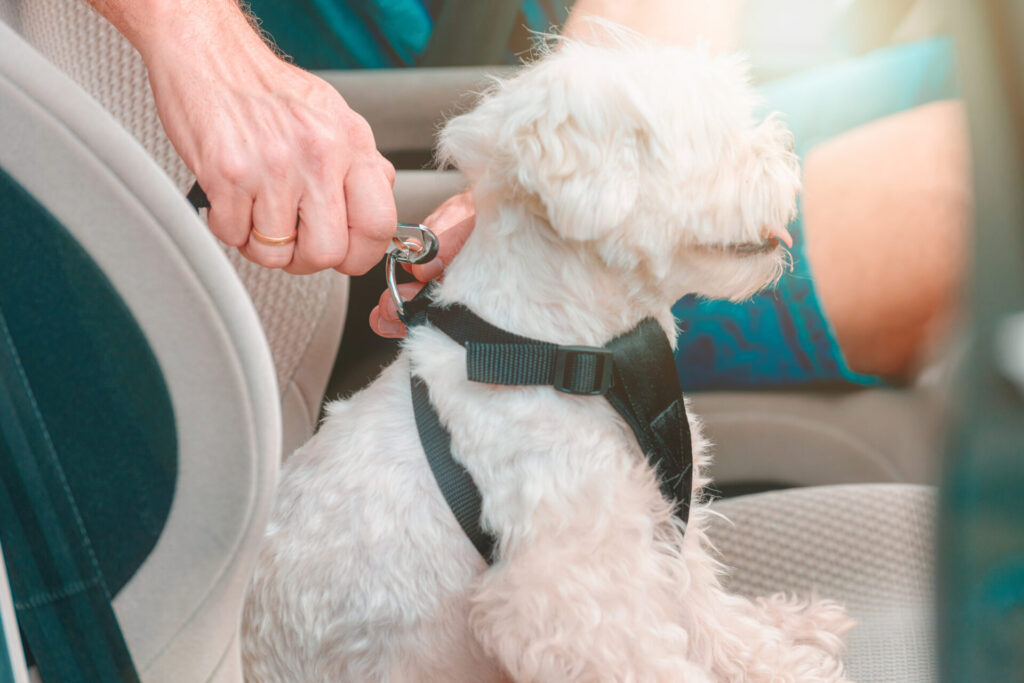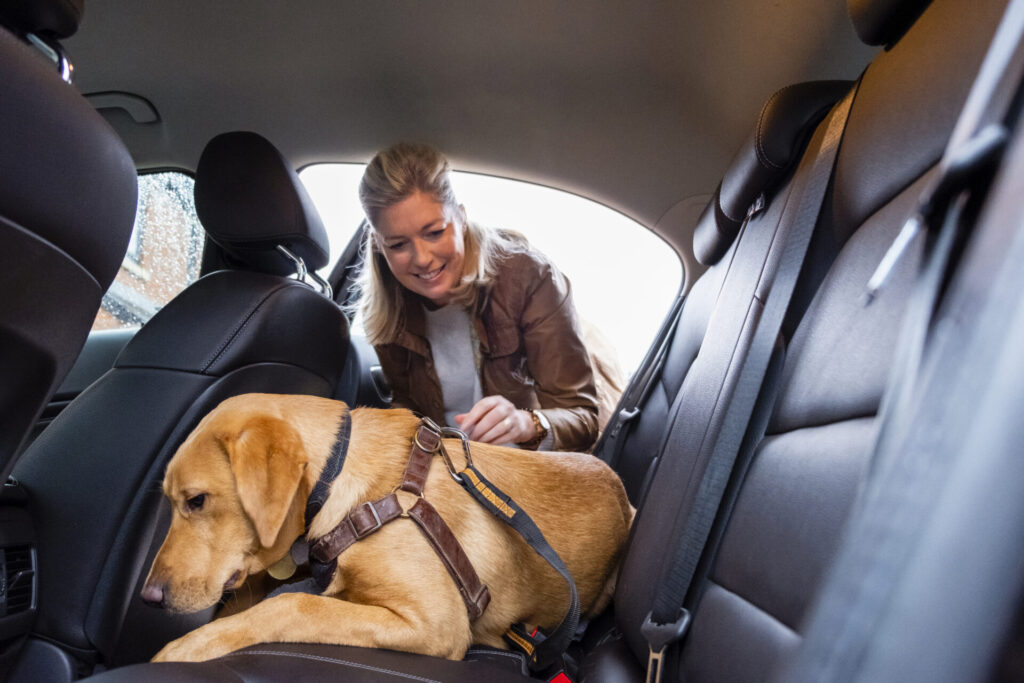Embarking on a road trip with your furry friend can be an adventure filled with tail wags and nose prints on the windows. But before you hit the road, buckle up for the journey, and don’t forget the dog seatbelt or crate to ensure your canine companion stays safe.
A 2019 study by Volvo Car USA and The Harris Poll found that having unrestrained pets in the car increases stress and distraction while on the road.
They surveyed 15 dog owners for 30 hours to determine how driving with a restrained pet verses an unrestrained pet affects their driving habits and behaviour. They found that unsafe driving habits were more than double when their dog was unrestrained.
They had 649 instances of unsafe driving behaviour when their dog was not restrained versus 274 instances when they were restrained. These unsafe driving behaviours include climbing on a driver’s lap or hanging their head out the window.
A loose dog can be a big distraction, increasing the likelihood of an accident. Dogs wandering around the car can easily pull your attention away from the road, making driving hazardous.
Keeping your pets safe while on the road is essential for pet parents. The Ontario SPCA recommends keeping your pets in the back seat while driving and having them buckled in using a seatbelt or carrier. For example, all cats should be in a cat carrier while on the road.
Just like humans, dogs are vulnerable to the forces of a car accident. A seatbelt or crate keeps them securely in place, significantly reducing the risk of injury during sudden stops or in the event of an accident.
Buckle up, here is what you need to know about dog seat belts.
So, what exactly are dog car seatbelts?
You’re hitting the open road with your furry friend, ready for an adventure. But wait—how do you keep your dog safe and your driving distraction-free? Enter the dog seatbelt: a specialized restraint designed to secure your pooch within the vehicle, ensuring everyone’s safety.
A dog seatbelt typically consists of a harness and a tether. The harness fits snugly around your dog’s body, distributing the force of sudden stops or impacts more evenly than a collar would. The tether attaches the harness to the car’s seatbelt system.
How does a dog seatbelt work?

The first step to ensuring your dog’s safety on the road is fitting the harness correctly. Think of the harness as a comfy seatbelt for your furry friend—it should be snug but not too tight, allowing for easy movement. Typically, it goes over the dog’s head and around its chest and torso, with adjustable straps for that perfect fit.
Next up is the tether. This is the crucial link between the harness and your vehicle. One end clips to the harness, while the other fastens to the car’s seatbelt buckle. It’s like connecting the dots for ultimate safety!
Once your dog is harnessed and buckled in, adjust the tether length so they can sit comfortably and enjoy the ride as much as you do.
To keep your four-legged buddy as safe as possible, avoid seating them in the front and always ensure they are properly fastened in.
How do I pick the best dog seatbelt?

The first step in selecting your dog’s proper seatbelt is determining its weight and size. Dog harnesses have a sizing chart like the ones we see when online shopping for ourselves, so make sure you select the correct size for your dog.
Next, ensure the harness and tether are made from high-quality materials that will hold up over time. If your dog’s seatbelt starts to show wear and tear, it’s time for a replacement to guarantee safety during those car rides.
Lastly, opt for a crash-tested harness to make sure it will help keep your four-legged friend safe.
What if I have a larger dog?
All dog owners should know that dog safety is not a little thing whether you have a small or large dog.
If you have a larger canine, they should still have a seatbelt to ensure they are safe in the car. When selecting the proper harness, ensure it is designed for larger breeds. This will ensure the harness is safe for your dog.
Maximize your dog's safety
Using a seatbelt is just one way to ensure your pet’s safety while on the road. Whether going on a road trip or a casual trip to a friend’s house, you’ll want to ensure your four-legged friend is covered.
Pet insurance can help ensure that your pet receives the care it needs in an emergency and will help you cover the cost of unexpected vet bills.
CAA has partnered with Pets Plus Us to help keep your pet safe with pet insurance. Call 1-833-323-2452 or get an online quote today.
*CAA Members receive a discount of 13.5% off. Non-members receive a discount of 9% off.
The information herein is summarized. All Pet Insurance plans have limitations and exclusions. Specific products, features, coverage limits, rates, and discounts may vary by province, eligibility, and are subject to change. Medical Conditions that are noted, symptomatic or diagnosed prior to enrollment, or during a waiting period are pre-existing to Coverage and not eligible for reimbursement. This advertisement is an outline only, the actual policy issued Terms and Conditions will prevail.
© 2024 All rights reserved. Pets Plus Us Pet Insurance policies are underwritten by Northbridge General Insurance Corporation, distributed by PTZ Insurance Services Ltd. & Société d’Assurances Collectives (Sodaco) Inc. in Quebec. Pets Plus Us Pet Insurance is available in all provinces and territories. Pets Plus Us®, Pets Plus Us & Design and related words and logos are trademarks and the property of PTZ Insurance Services Ltd.

